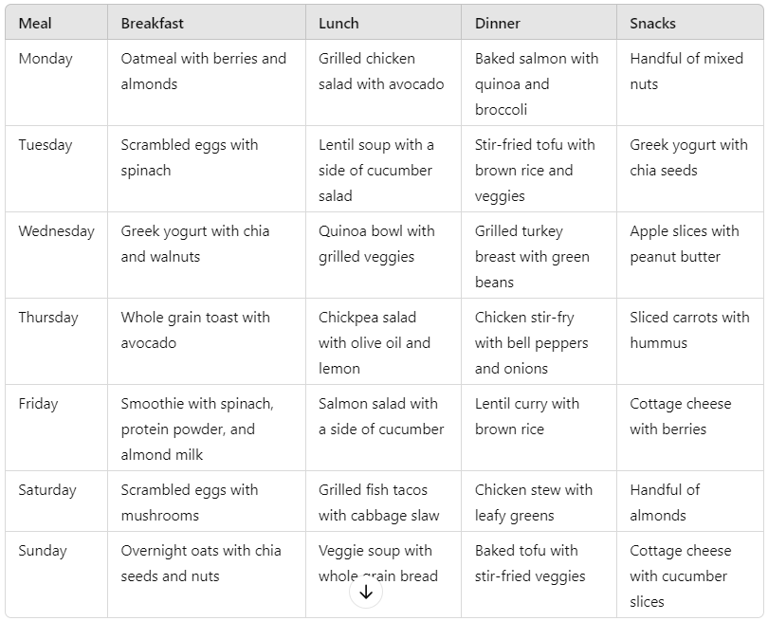What’s the Best Diet for Diabetics? A Guide to Eating Smart and Staying Healthy
If you're managing diabetes, you might often wonder, "What’s the best diet for me?" It can feel overwhelming to figure out what foods to eat that won't cause your blood sugar levels to spike. But here's some good news: a diabetic-friendly diet doesn’t have to be boring or restrictive. It's all about making smart food choices that keep your blood sugar levels stable and your body feeling its best.
HEALTHHEALTHY RECIPE
Prathameshb7
10/4/20242 min read


Understanding Diabetes and Diet
Before jumping into specific meal ideas, let’s understand why diet plays such a big role for diabetics. When you have diabetes, your body either doesn’t produce enough insulin (Type 1) or doesn’t use insulin properly (Type 2). This affects how your body processes glucose (sugar), making it important to focus on foods that keep your blood sugar in check.
A diet rich in whole grains, vegetables, lean protein, and healthy fats can help control blood sugar levels. Foods with a low glycemic index (GI) are particularly beneficial, as they raise blood sugar slowly and steadily, preventing spikes.
What to Include in a Diabetic-Friendly Diet
Non-Starchy Vegetables: Leafy greens, broccoli, cauliflower, bell peppers, and zucchini.
Whole Grains: Brown rice, quinoa, oats, barley, and whole wheat.
Lean Proteins: Chicken breast, turkey, fish, tofu, eggs, and legumes.
Healthy Fats: Avocados, olive oil, nuts, seeds, and fatty fish like salmon.
Low-Sugar Fruits: Berries, apples, and pears in moderation.
What to Limit:
Processed Sugars: Candy, sugary drinks, pastries, and sweets.
Refined Carbs: White bread, pasta, and rice.
Saturated Fats: Avoid excess butter, fatty cuts of meat, and fried foods.
Sample Diabetic-Friendly Meal Plan (With Recipes)
Here’s a sample weekly meal plan to help you get started:


Recipe 1: Grilled Chicken Salad with Avocado
Ingredients:
1 grilled chicken breast (sliced)
1/2 avocado (sliced)
Mixed greens (spinach, lettuce)
1 tbsp olive oil
Lemon juice, salt, and pepper to taste
Instructions:
In a bowl, toss the mixed greens with olive oil and lemon juice.
Add the sliced grilled chicken and avocado on top.
Season with salt and pepper, and enjoy a filling, protein-packed salad!
Recipe 2: Baked Salmon with Quinoa and Broccoli
Ingredients:
1 salmon fillet
1 cup quinoa (cooked)
1 cup broccoli florets
1 tbsp olive oil
Garlic powder, salt, and pepper
Instructions:
Preheat the oven to 400°F (200°C).
Place the salmon on a baking sheet, drizzle with olive oil, and sprinkle with garlic powder, salt, and pepper.
Bake for 12-15 minutes, until the salmon flakes easily with a fork.
Steam the broccoli and serve with the cooked quinoa alongside the salmon.
Why This Meal Plan Works for Diabetics
Balanced Nutrition: The meal plan focuses on foods that are low in glycemic index (GI), meaning they won’t cause blood sugar spikes.
High in Fiber: Whole grains, fruits, and vegetables are rich in fiber, which helps improve blood sugar control by slowing down the absorption of sugar into the bloodstream.
Rich in Healthy Fats and Protein: Healthy fats from avocados, nuts, and fish are great for keeping you full and satisfied, while lean proteins help with muscle maintenance and overall energy.
Helpful Tips for Managing Diabetes
Portion Control: Be mindful of portion sizes, especially with carbs. Even healthy carbs like whole grains should be eaten in moderation to avoid blood sugar spikes.
Eat Regularly: Avoid long gaps between meals, as this can lead to overeating or choosing unhealthy snacks. Try to eat at the same time each day to maintain blood sugar levels.
Stay Hydrated: Drinking plenty of water is essential for everyone but even more so for diabetics. Water helps keep blood sugar levels stable and supports your metabolism.
